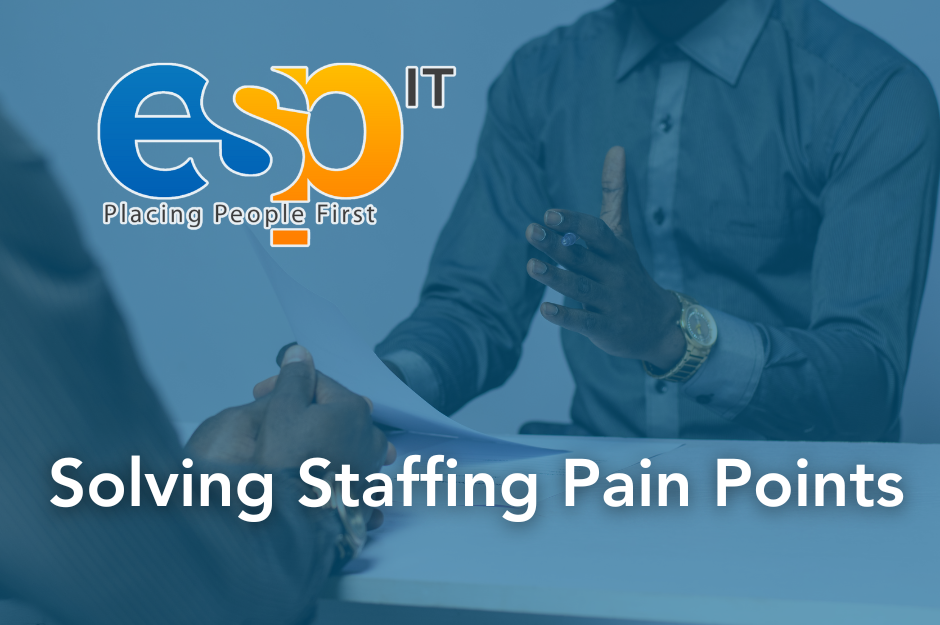
The Minnesota High Tech Association’s monthly workforce reports show between 7,000 and 10,000 tech job openings in Minnesota, with the top 5 skills in demand being Java, SQL, QA, SDLC, and Linux. Chances are, you’re looking for IT professionals in Minneapolis with those same skills, which means you have competition. Project Managers, Java Developers, Software Engineers, and .NET developers are “most wanted” by you and everyone else in the Twin Cities. They’re hard to find and they aren’t cheap to come by, so you have to be strategic when looking to fill these top tech roles. Luckily for you, we’ve compiled some tips that have helped many of the Minnesota companies we’re fortunate to call our clients fill their IT talent needs.
RETAIN THE BEST TALENT
Let’s start with retention, because the efforts you make to retain your team members can also be used to continue to build your team. If the things you do for your team make them want to stay, they’ll also attract new talent.
1. Consider Your Technologies
While some CIOs have the perspective that sticking with older, tried-and-true technologies is the best way to go, others have found that one way to attract and keep talent is by moving to the latest and greatest tech stacks. We find the latter to be true especially with young professionals, but there does seem to be something in the nature of tech professionals that makes them want to move on to the “next best thing” in technology languages and tools. When it comes to retention, talk to your team about what technologies they are happy with, and which ones they are itching to upgrade. Would they be more satisfied with their work if they got to use the latest version of Microsoft technologies stack, or Agile methodology rather than Waterfall? If your team is happy with your tech stack or the direction you’re heading, they’re likely to stay with you. If not, they’ll seek greener, more hip pastures.
2. Offer Real Perks Not Free Food
The bottom line: your team won’t complain about free food. But that doesn’t mean food is the perk that matters most to them. Most tech professionals we talk to are looking for a company that’s supportive of work-life balance, allows flexibility to work from home, provides tuition or advanced education reimbursement, and offers competitive benefits. In addition, the millennial generation values acknowledgement, appreciation, and promotion (who doesn’t?). We’ve also heard from our CIO partners that their millennials want to contribute to the community, whether it is directly through the work they do, or through fundraising programs or charitable hackathons.
Speaking of hackathons, many companies have found success in retaining their employees by providing them some amount of time, be it a day or a week, each year to work on whatever strikes their fancy. Give your employees license to be creative and they’ll pay you back in dividends, either by striking big on a great idea, or in sticking with you through thick and thin.
3. Create a Strong Culture
If your employees aren’t happy and satisfied with their jobs, and your team isn’t a cohesive unit, you will not have success and you won’t keep your employees. This applies to the IT consultants on your team as well as your FTEs. Every single person on your team needs to be aligned to the culture of your company and be working toward the same vision.
FIND THE BEST TALENT
Everyone wants the best when it comes to their team, but do you know what “the best” for your company really is? Here are three things to look for:
1. Identify the Kind of IT Pros You Need
One of the issues we see our clients facing is that the talent they think they need doesn’t exist yet…or anymore. Such searches require technology skill sets that are either so new that there aren’t enough people trained in them, or so out of date that they’re undesirable to a lot of IT talent—particularly young IT talent. The first step to finding the best is identifying what you truly need, and what you can get based on today’s competitive market. Ask yourself:
- Does a candidate need to be proficient in your entire tech stack, or does he or she just need the ability and willingness to learn it?
- Do you need 7 years of experience, or would 1-2 years be enough if the person is the right culture fit for your organization?
- Should this be a full-time hire that would benefit your team for 3-5 years, or would a 6-24 month contractor be better suited to the work you need completed?
By taking time up front to identify what your tech department truly needs based on what will work—not on perfection—you save yourself and your team both time and effort.
2. Use the Resources Available To You
- One of the best ways to find great talent is to ask your team who they know. Your team should be networking and participating in learning events, which are great places for them to promote your opening, or meet people they can refer to your organization.
- Another option, and the one with the quickest results, would be to partner with an IT staffing and consulting firm like ESP IT. We’re dedicated to identifying the best IT talent for our clients’ software development projects, and our clients tell us we are great at matching culture and technical fit for them. The biggest advantage to you is that the firm you partner with will do the searching and narrowing down for you, so that you’re only spending time on qualified candidates. Firms like ESP IT also talk to hundreds of active and passive candidates on a regular basis, so when you bring your opening to them, they have a large pipeline of candidates to search through to identify the right fit for you.
- Social media and job boards can be another great resource. While this option is likely the most time consuming, LinkedIn is a great resource for active and passive candidates, Facebook is primed to compete, and traditional job boards are still used by many IT professionals.
3. Think Outside The Box
There’s no getting around the shortage of technical talent, which might mean to find the best, you need to create the best. Take advantage of recent college graduates, women within your organization with an interest and knack for technology, or graduates of alternative coding training programs, and start training them. Use your existing staff to mentor and train these individuals. While they may lack workplace experience, with the right training programs and leadership in place, and a willingness to wait a short while for results, creating the talent you need may be the best way for you to acquire top talent in this current market.
ATTRACT THE BEST TALENT
Just because you have a great candidate interested in your role doesn’t mean it will be easy to get him or her on your team. With the shortages and competition that you face today, you’re probably going to need to put a little extra effort in to get tech pros working on your projects.
1. Be Prepared to Act Fast
One of the best ways to snag talent is to act fast. Be organized so that you can condense your interview process and negotiations. Know up front that you’re approved to hire, what the going rate for that role is in the Minneapolis market (and be approved to offer that rate), and organize your interviewers to maximize your first interview with a candidate and not ask the same questions over and over. You don’t want to lose a terrific candidate to an offer that came in from a different company while they are still in the interviewing process with yours. When it comes to consultants, it’s especially important to act quickly. Often they are looking to avoid a gap in employment and will take the first great opportunity that comes their way.
2. Got Bragging Rights? Use Them to Sell Your Company
It’s a buyer’s market. When you’re interviewing it’s important that you not only ask questions to help you identify the right candidate for your organization, but also take time to sell your organization to candidates, and leave time for them to ask questions to learn even more. What advantages does your company offer for an IT professional’s career? Do you offer work-life balance, ongoing education reimbursement, a chance to work with new and exciting technologies, a collaborative team, a great culture, etc.? If you’re passionate about your company and team (and in our opinion if you’re not, you shouldn’t be the one doing the interviewing), brag about what makes you so awesome. Answer candidates’ questions candidly, and give them the opportunity to learn as much about your company as possible.
3. Be competitive in your rates
While many millennials will say that they value work-life balance and the opportunity to contribute to meaningful work (and it is true), money still matters, especially in a competitive market where candidates are receiving multiple offers. Make your offer desirable by offering at, or better yet, slightly better than the market value. Paying a bit more to get a talented professional in your empty seat will cost you less in the long run than having it empty for too long.
You may have noticed a common thread: know thyself. The first step to building a great IT department is knowing who you are, what you want, what you have to offer, and possibly, what you want to become. The second step is knowing how to leverage that knowledge and take advantage of creative and alternate approaches to hiring employees or consultants to your team. Once you’ve evaluated your technologies, the perks you offer, and your company culture, decide what is missing, what you can do differently, and what you’re best at. Use the latter as “bragging points” when you’re working to attract talent, and figure out which weaknesses to address sooner than later. By following these tips, you’ll not only secure the best IT talent, you’ll keep them on your team too.
If you’d like help finding your next IT consultant or FTE, contact us with your requirements or for more information.



